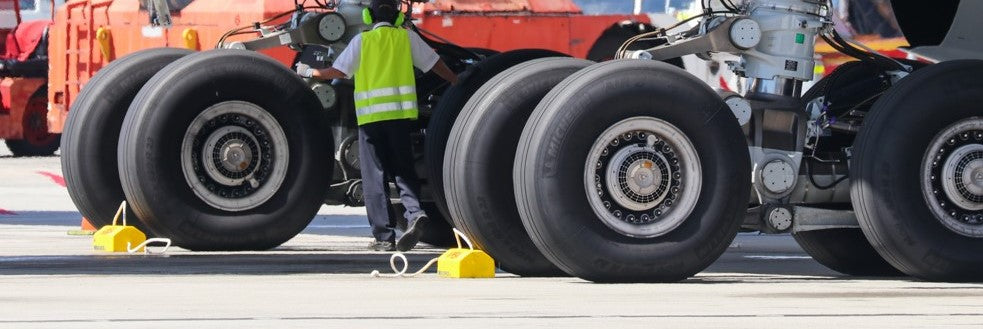Ramp operations at airports can be very complex to coordinate, with ground handling agents each performing different tasks to ensure a smooth aircraft turnaround. Ground handlers must perform their own task – whether that be marshalling or maintenance – in the same area as other staff, on the same aircraft, and to the same timeframe. While fundamental to getting the aircraft back in the air, unfortunately this process tends to a growing number of ground handling incidents worldwide.
This blog will take you through the importance of safety in ramp operations, ground handling regulations, and present what we believe to be the most important ground support equipment needed to create a safe turnaround – hint: it’s simpler than you think!
What is ground handling and servicing?
Ground handling, servicing, and ramp operations comprise of all the tasks required for aircraft handling at an airport. This can include:
- Maintenance
- Marshalling
- Cleaning
- Refuelling
- Towing
- Chocking
- Baggage handling
- Waste services
- Pushback
Why is ground handling important?
Ground handling keeps airport operations running smoothly. Each ground handling task contributes to ensuring each flight is on schedule. An effective ground handling operation can be measured by an aircraft’s turnaround time, also referred to as TAT. In aviation, turnaround time is the time it takes prepare an aircraft for its next flight, measured from the aircraft’s arrival time to its next departure. Striking a balance between a safe and fast turnaround can be tricky, with pressure from airlines to have the aircraft back in the air as soon as possible (short TAT), ground handlers may inadvertently expose themselves to avoidable safety risks and hazards. In their 2021 Safety Report, the International Air Transport Association (IATA) estimated that ground operations accounted for 4% of aircraft accidents.
What is ground handling safety?
Airport ground handling safety requires the consideration of all the risks presented during ramp operations. The safety of all ground handling agents should be paramount to ensuring successful ramp operations as there are many possible conditions that affect the ground handling operation:
- Extreme weather conditions
- High noise levels
- Extreme temperatures
- Flammable liquids
- Dark conditions at night
- Working at heights
To address these airport ground handling risks there are a number of safety precautions that should be considered. While the inherent risk of handling an aircraft cannot be removed, there are certainly ways to mitigate these with ground support equipment.
IATA estimates that the aviation industry could save US $8 billion by improving ground safety, and consequentially reducing incidents during ground handling.
Ground handling requirements
There are a number of ground safety standards in aviation to ensure the safety of all involved. Each country will have their own ground handling legislation – although some countries may be stricter than others – so it is important to have a safety-oriented mindset when coordinating ground operations.
In Australia for example, ground operations are regulated by the Civil Aviation Safety Regulations, which covers things from fuelling to unauthorised travel.
What is ground support equipment?
Ground support equipment is the range of equipment used to handle an aircraft at an airport. GSE comprises of anything used to service, maintain, or move an aircraft on the apron – between flights.
Arguably one of the most important ground handling equipment is aircraft wheel chocks. Aviation chocks are used to prevent unwanted movement of aircrafts during ground handling operations – and as such, removing any risk posed to ground agents and other personnel on the tarmac.
AerochockTM aviation wheel chocks present many benefits to ground handlers:
- Lightweight – up to 40% lighter than comparable chocks
- FOD free – no bolts or nuts that can wear free
- Easy to manoeuvre – available with rope and anchor
- Customisable – print your logo on the chock so it will never go missing
- Suitable for all conditions – available with ice cleats
- Range of sizes – AerochockTM sizes suit private jets up to large wide-body aircrafts
AerochockTMs directly address the safety requirement in 91.420 of the Australian Civil Aviation Safety Regulations which calls for a “parked aircraft not to create hazard”. Through our tried and tested design, AerochockTM aircraft wheel chocks are proven to stabilise even the largest aircrafts during ramp operations.

Make the switch today to AerochockTM – the most trusted aircraft support equipment. Don’t take our word for it? Read what our customers are saying.
For more information or a quote email sales@aerochock.com

